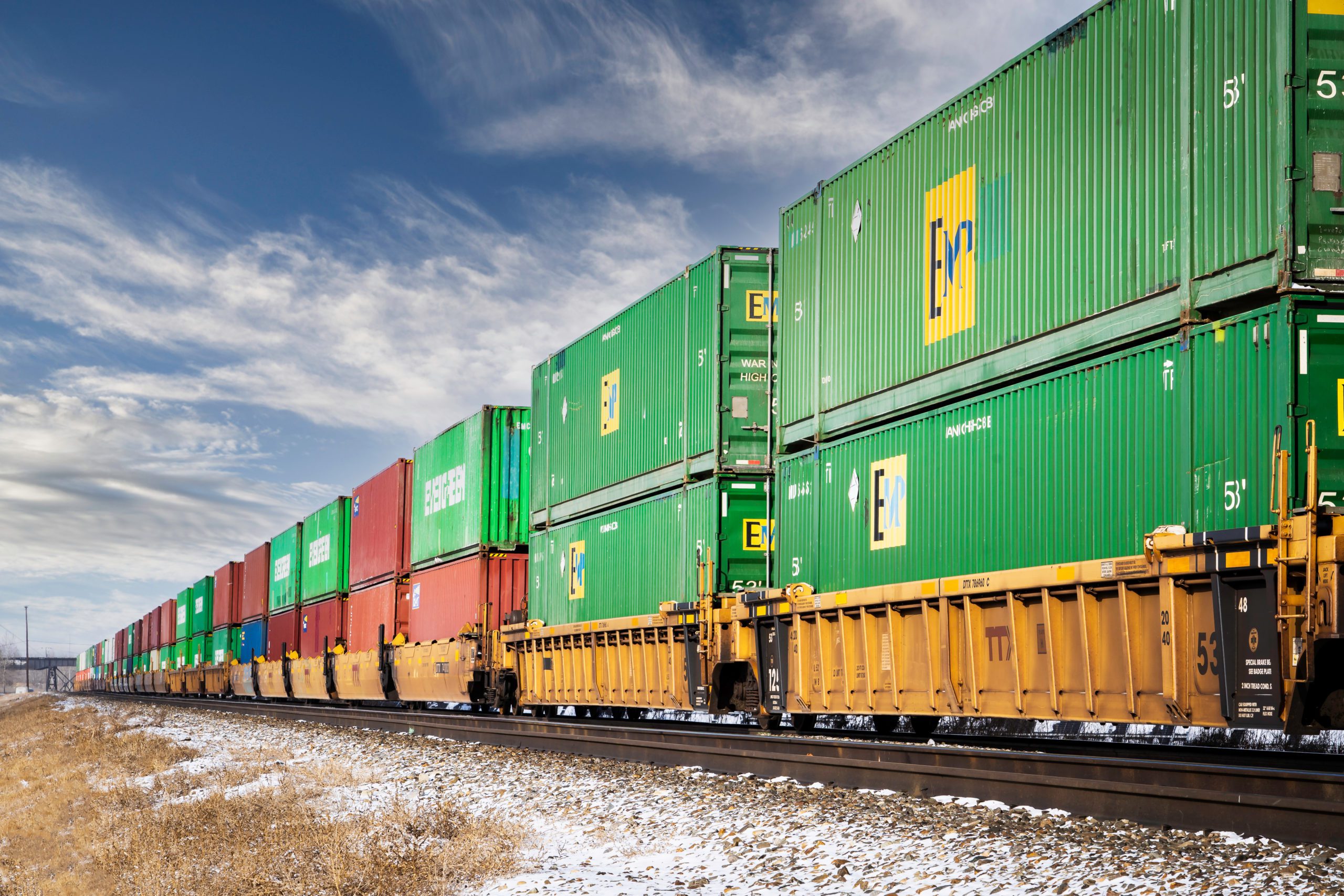The rise of logistics connectivity and shipment visibility systems has been a boon to intermodal, multimodal, and global shipping industries. While rail shipment plays an integral and growing role as a high-volume, low-cost transportation option, there has been a glaring lack of logistics visibility, which has discouraged its use.
With the increasing complexity of global supply chains and the critical role intermodal transportation plays in supply chain management, companies are looking for innovative and effective ways to move their cargo. Inland freight transport was initially dominated by roadways, largely due to their widespread presence. However, over time, other profitable modes of transport, especially rail, have seen a surge in infrastructure investments and incorporation into the supply chain.

In September last year (2022), the U.S. Department of Transportation issued a Notice of Funding Opportunity (NOFO) announcing the availability of over $1.4 billion in Consolidated Rail Infrastructure and Safety Improvement (CRISI) Grant funding. The CRISI Program, administered by the Federal Railroad Administration (FRA), advances projects that modernize America’s freight and passenger rail infrastructure, allowing people and goods to move more safely, efficiently, and helping make goods more affordable for American families, while reducing road traffic and pollution. These investments will play a crucial role in modernizing our country’s rail infrastructure and strengthening supply chains.
While there are advantages to moving freight by rail, there are also areas for improvement in rail transportation for better visibility, as many existing rail shipment tracking systems do not allow companies to connect and coordinate available information with corrective measures or actions that suppliers must handle.
Although tracing the train through rail tracking portals or carrier aggregation platforms is sometimes an option, this only provides the sporadic whereabouts of cargo and still cannot fill some important gaps such as:
- First to last mile visibility – not possible through a rail tracking portal or carrier aggregation platforms, since it cannot track cargo while it is in storage or in-transit to the rail yard or during local delivery.
- Load-level tracking – even if the shipper tracks the train, there is no way of knowing if its cargo or a rail car is even riding that train, which level of visibility requires item-level tracking.
- Alerts in case of delay – if a company needs to take corrective action in case of a delay, a deviation/delay warning system is required in real time, which is not included in basic rail shipment tracking systems.
Having reliable, accurate, and timely rail shipment visibility in place to detect late or idle rail shipments would help identify problems and manage issues before they get beyond the company’s control.
Real-world illustration
The chemical industry has historically faced difficulties in fulfilling orders due to supply chain disruptions in the industry, especially when it comes to returnable assets such as railcars. Production, supply, demand, and other variables complicate supply chain planning, implementation, and costing. In addition to this, the chemical industry supply chain has to constantly maximize asset utilization and minimize asset downtime.
Railcars are an important asset in a chemical supply chain, this is because chemical companies can significantly improve their supply chain performance with better railcar management. Without adequate visibility and accurate ETAs, it is difficult to know when a railcar will be unloaded at a customer’s location or its full/empty status.
Recently, one of the world’s largest chemical producers, operating in more than 25 countries, overcame its greatest supply chain challenge using Roambee’s real-time railcar tracking in-yard and in-transit using sensor intelligence. Solar-powered IoT sensors were installed on top of railcars for all-weather durability and actionability with data analytics, and through real-time location and condition sensing data, the company was able to gain better visibility on their railcars’ location and full/empty status – resulting in a 70% increase in the accuracy of its ETAs.
Visibility and intelligence
Supply chain intelligence, derived from accurate and actionable visibility, provides business owners insight into the status, location, and movement of goods at all stages of the supply chain, from the sourcing of production inventory to the delivery of finished goods.
As analytics platforms and tools continue to evolve, businesses can increasingly use data to gain end-to-end supply chain visibility that is reliable, actionable, and covers packages from origin to delivery destination. Real-time data can foster proactivity, but even with the proven benefits of sharing data among manufacturers, vendors, and logistics teams, only 49% of businesses capture and use data in real time.
Sensor-driven visibility and reliable data analytics offer companies using rail shipping an effective alternative to costly air or road freight, through more accurate ETAs for predictable delivery times – a possibility never seen before in rail transportation.
There is much more to rail logistics management in the modern age, including constant shipment movement tracking, route deviations, detention at yards, dwell time at unloading docks, and bottlenecks along the way. But with robust predictive analytics platforms, the challenges of managing shipments transported by any mode can be reduced and managed with ongoing monitoring.
Sanjay Sharma is CEO at Roambee, responsible for leading the company’s strategt, growth, and value. Sharma has co-founded and led two successful Silicon Valley technology startups: KeyTone Technologies, acquired by Global Asset Tracking, and Plexus Technologies, now an ICICI Ventures portfolio company. He has been a part of the engineering teams at EMC, Schlumberger, and NASA.

